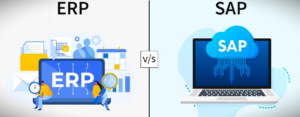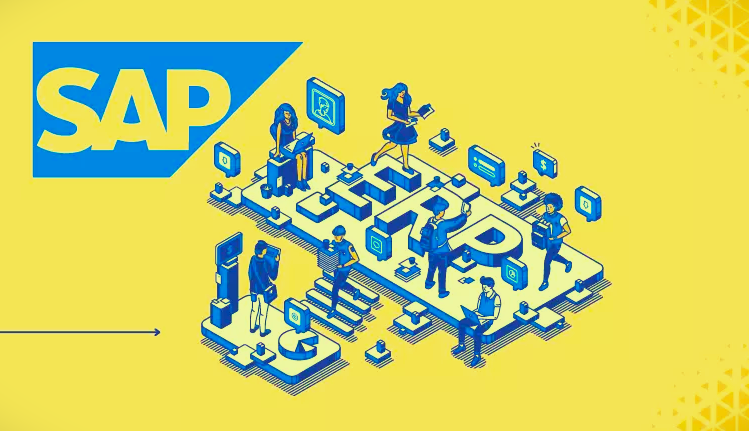In the fast-paced world of business, efficiency and real-time data are paramount. Enterprise resource planning (ERP) solutions are helpful, and SAP ERP is a top option. Integrating multiple business processes into a single unified platform, this solution facilitates the seamless management of finance, human resources, supply chain, and more. Businesses looking to stay competitive must adopt modern ERP solutions that streamline operations and bring greater agility and visibility.
Understanding how SAP ERP can transform business operations involves looking at its comprehensive suite of tools and how they integrate with existing systems. Whether automating financial reporting or enhancing supply chain efficiency, implementing this system can significantly enhance operational efficiency, thus providing a robust foundation for scalable growth and innovation. Companies that leverage ERP systems effectively can position themselves for long-term success by gaining a comprehensive view of their operations and making data-driven decisions.

Advantages of SAP ERP
The benefits of adopting SAP ERP are multifaceted. One key advantage is the ability to derive real-time insights from data, which aids in informed decision-making. With access to updated and accurate data, business leaders can react quickly to market changes and make strategic decisions that drive performance. Additionally, businesses can streamline operations, resulting in significantly reduced operational costs. Enhanced compliance and regulatory adherence further add to its value, ensuring that companies meet industry standards and avoid potential legal issues.
Moreover, it provides integration for a more cohesive business environment. From automating routine tasks to providing detailed analytics, the system helps optimize overall business processes. It’s no wonder many industries, from manufacturing to retail, are investing in this technology. Improved collaboration across departments, better resource management, and increased productivity are just a few more reasons why companies turn to SAP ERP. The result is a more agile and resilient business that can quickly adapt to the changing landscape.
Critical Components of SAP ERP
- Financial Accounting: Manages financial transactions and ensures compliance with various financial regulations. It helps businesses maintain accuracy and integrity in their financial reporting by tracking all financial operations and providing a solid fiscal management and strategic planning foundation.
- Human Resources Management: Handles employee data, payroll, recruitment, and performance management. This component ensures that all HR processes are integrated and streamlined, enabling better management of the workforce and improving employee satisfaction through efficient HR operations.
- Supply Chain Management: Enhances the supply chain’s information, product, and service flow. By enhancing visibility and coordination among different supply chain elements, businesses can reduce costs, improve delivery times, and respond flexibly to market demands.
- Customer Relationship Management:Enhances customer interactions and improves service quality. With a centralized system for managing customer information and interactions, companies can better understand customer needs, deliver personalized experiences, and increase customer loyalty.
- Business Intelligence: Provides data analysis, reporting, and business performance management tools. Businesses may uncover patterns, make proactive decisions that promote continuous development, and obtain insightful knowledge of their operations using sophisticated analytics and reporting tools.
Best Practices for SAP ERP Implementation
Successful implementation of SAP ERP requires meticulous planning and execution. Engaging stakeholders early in the process ensures that the system meets organizational needs and expectations. Continuous training and support are vital to updating the staff on the system’s functionalities. Workshops, continuous assistance, and hands-on training sessions help guarantee that staff members are at ease with the new system and can utilize it efficiently.
Moreover, thoroughly considering key implementation factors, such as data migration and system customization, cannot be overstated. Better utility and seamless integration are guaranteed when the system is customized to meet particular company objectives. Additionally, establishing a clear project timeline and setting realistic goals help manage expectations and keep the implementation process on track. Periodic reviews and adjustments during implementation can further enhance the success rate of ERP projects.
Common Challenges and Solutions
Implementing an ERP system has its challenges. Common issues include employees’ resistance to change and unexpected technical problems. To counter these challenges, it’s essential to have a risk mitigation strategy in place. Communicating the new system’s benefits can help alleviate resistance and promote user adoption. Employee involvement in the transition process and open communication can increase their sense of involvement and support for the change.
Pilot programs are valuable tools for identifying and resolving problems before a full-scale implementation. Technical support and regular system updates also play a crucial role in overcoming these challenges. By providing timely support and resolving issues promptly, businesses can minimize disruptions and ensure a smoother transition to the new system. Moreover, continuous monitoring and performance evaluations can assist in pinpointing problem areas and gradually enhancing the ERP system’s effectiveness.
Future Trends in SAP ERP
In the future, SAP ERP anticipates incorporating two cutting-edge technologies: artificial intelligence and machine learning. These innovations enhance predictive analytics, automate routine tasks, and increase operational efficiency. As businesses strive for agility and responsiveness, integrating these features will become increasingly crucial. Predictive maintenance, demand forecasting, and personalized customer experiences are examples of how AI and machine learning can enhance ERP systems.
Additionally, cloud-based ERP solutions are gaining traction, offering scalability and flexibility that traditional systems can’t match. Thanks to this trend, businesses can respond to client needs and market shifts faster, which helps them stay competitive in a changing environment. Cloud-based ERP systems also reduce the need for extensive on-premise infrastructure, lowering costs and simplifying maintenance. As more companies adopt cloud technology, we expect continued innovation and enhancements in ERP capabilities.
Conclusion
Integrating SAP ERP with modern business practices offers a strategic advantage in today’s competitive landscape. By understanding its components, benefits, and best practices, businesses can effectively implement this to achieve operational excellence. Organizations striving to succeed in a quickly changing business environment find it an essential tool due to its capacity to optimize operations, acquire immediate information, and improve adherence to regulations.
Keeping abreast of these developments can help firms maximize their ERP systems as technology advances. Enabling breakthroughs like artificial intelligence, machine learning, and cloud computing will further enhance SAP ERP’s capabilities, helping businesses maintain a competitive advantage and promote sustainable growth.




